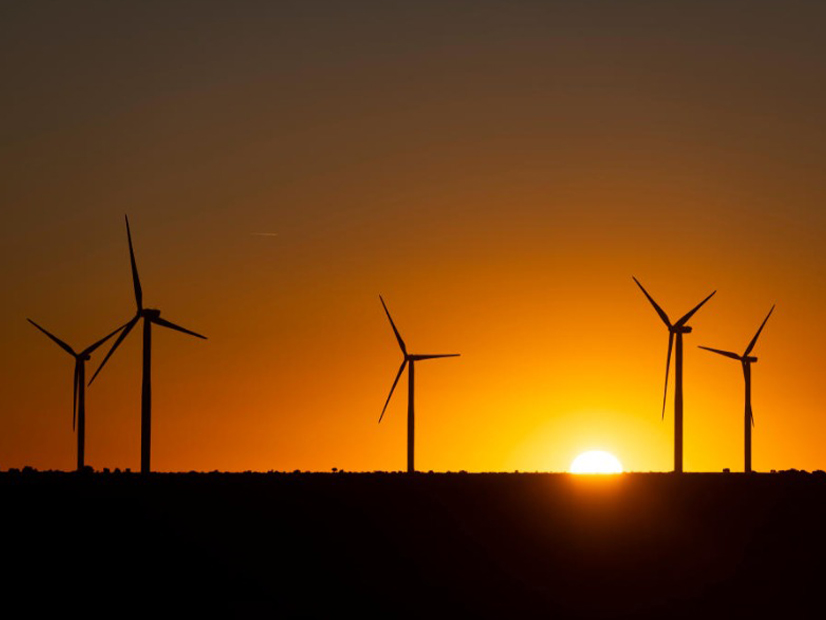The Natural Resources Defense Council’s Sustainable FERC Project has released a new interactive map of MISO’s interconnection queue, highlighting how many renewable gigawatts the footprint has lost out on because of limited transmission capacity.
The organization’s director, John Moore, said it’s important for regulators and policymakers to see where once economic renewable generation projects have evaporated.
“The primary reason we did this is the MISO doesn’t offer a lot of insights into the locations of these projects. And I don’t think people are aware of the projects that are growing and dying right in their backyards,” Moore said in an interview with RTO Insider.
The map displays in-progress and canceled projects on the county level. The Sustainable FERC Project found that 245 clean energy projects — or 40% of withdrawn projects over the past four and a half years — “had reached advanced stages of the generator interconnection process” when they were shelved. The organization said the projects could have generated 30.9 GW.
Michigan and Minnesota had the most withdrawn generation projects, the organization said. Michigan, which experienced a capacity shortage to meet local load obligations in this year’s MISO capacity auction, saw 42 projects worth about 5.1 GW abandoned from 2016 to 2020. Minnesota saw 36 projects that could have generated nearly 5 GW withdraw.
“It illustrates in another way that problem,” Moore said of the map. “Twice as many projects are falling out of the queue than normal because of the cost of integrating them.”
The Sustainable FERC Project said many developers are forced to scratch projects because of MISO’s inability to approve “large-capacity transmission lines and grid upgrades.” Moore said that while the cost of network upgrades isn’t the only reason for projects falling out of the queue, it’s become the most significant one.
MISO earlier this month announced it will embark in a series of long-range transmission studies that could produce project approvals as early as the end of 2021. (See MISO Processing Heftiest Interconnection Queue Ever.) The grid operator is also working with stakeholders to try to better line up its annual transmission planning with needed network upgrades that are identified in interconnection queue studies.
The MISO queue currently contains 756 projects totaling 113 GW, 64% of which is solar. It’s the grid operator’s largest-ever interconnection queue, with 353 project proposals representing about 52 GW of new generation entering in July alone.
Moore isn’t hopeful all that solar generation will see the light of day. He said MISO is late to arrive at the long-term transmission studies, and he predicted that many projects in the record-breaking queue will fall off.
“I’m still not hopeful because I don’t think the planning is keeping up with the queue,” Moore said. “The costs for the network upgrades are obviously far too expensive for any developer to absorb. So, no, I’m not hopeful.”
Clean Grid Alliance, Solar Energy Industries Association and the American Wind Energy Association said upgrade costs have been raising the cost of renewable generation projects in MISO West by more than 60% on average.
The Sustainable FERC Project’s map doesn’t yet include the lineup of new projects that entered in July, but Moore said his organization plans to update it and continue to keep tabs on unrealized projects for regulators and policymakers.
“Leaders aren’t familiar with the types of projects that are coming and going and trying to get on the system,” he said.
Moore said that though MISO is moving in “better directions” with a long-term transmission process approach and trying to coordinate grid planning, states’ clean energy targets could be compromised by project withdrawals. He pointed to integrated resource plans in Michigan and Minnesota, which order more renewables online while the two states see promising proposals vanish.
“Whatever the intention of utilities, the lack of transmission makes it significantly harder,” Moore said, adding that MISO could benefit from using longer-term study assumptions for both generator interconnection and transmission planning.
The Sustainable FERC Project pointed to EDP Renewables’ planned 100-MW wind farm in southwestern Minnesota that was dropped this year after MISO assigned the project an $80 million network upgrade cost — eight times what the developer expected.
EDP Origination Manager Vipul Devluk said the project could not absorb the cost burden. “Ultimately, we had to cancel our power purchase agreement discussions with the customer, and we had to relay to the local community that the benefits they were expecting from this project would not be forthcoming,” he said.
Moore said that even MISO South is susceptible to thwarted renewable megawatts because of MISO’s lack of transmission buildout. The map shows Mississippi lost nearly 2 GW in planned solar generation from 2016 to 2020.
“There is economic development and carbon-free energy being left on the table,” Moore said. “Once there were projects, and now there are none; once there were plans, and now they’re gone.”
MISO spokesperson Allison Bermudez said the RTO “continues to work with our stakeholders to determine the most cost-effective transmission investments needed to support future energy needs.” She declined to comment further on the map.
The RTO has said it can likely operate its system reliably with renewable penetration targets up to 50%, but only if members engage in dramatic transmission expansion. (See MISO Renewable Study Shows More Tx, Tech Needed.)



